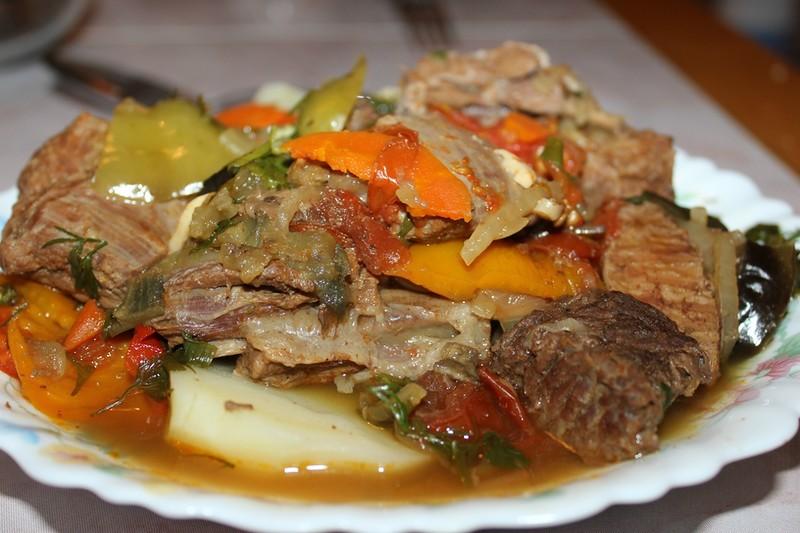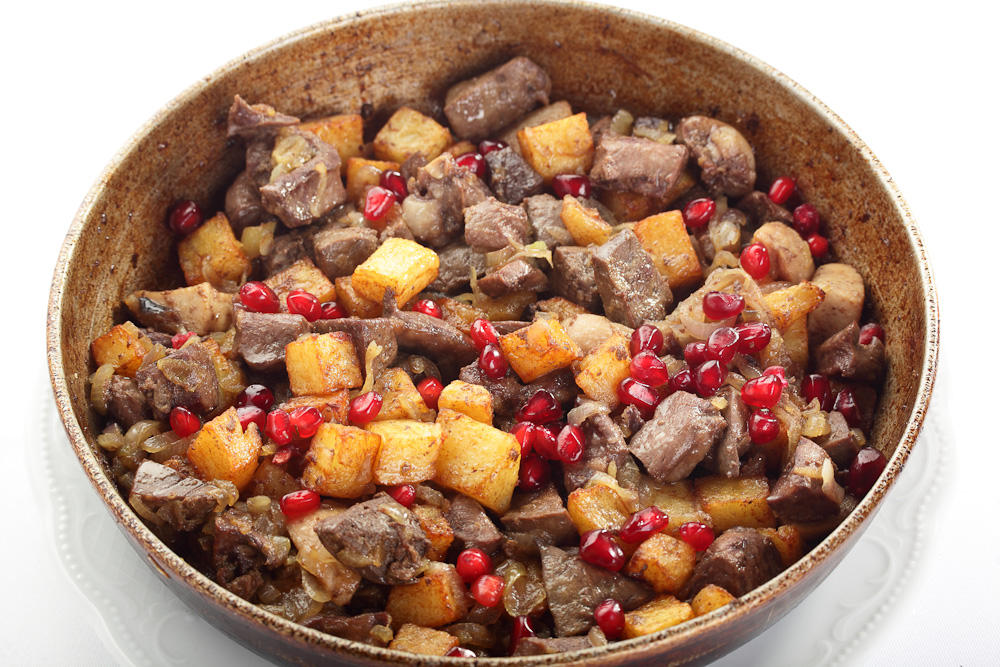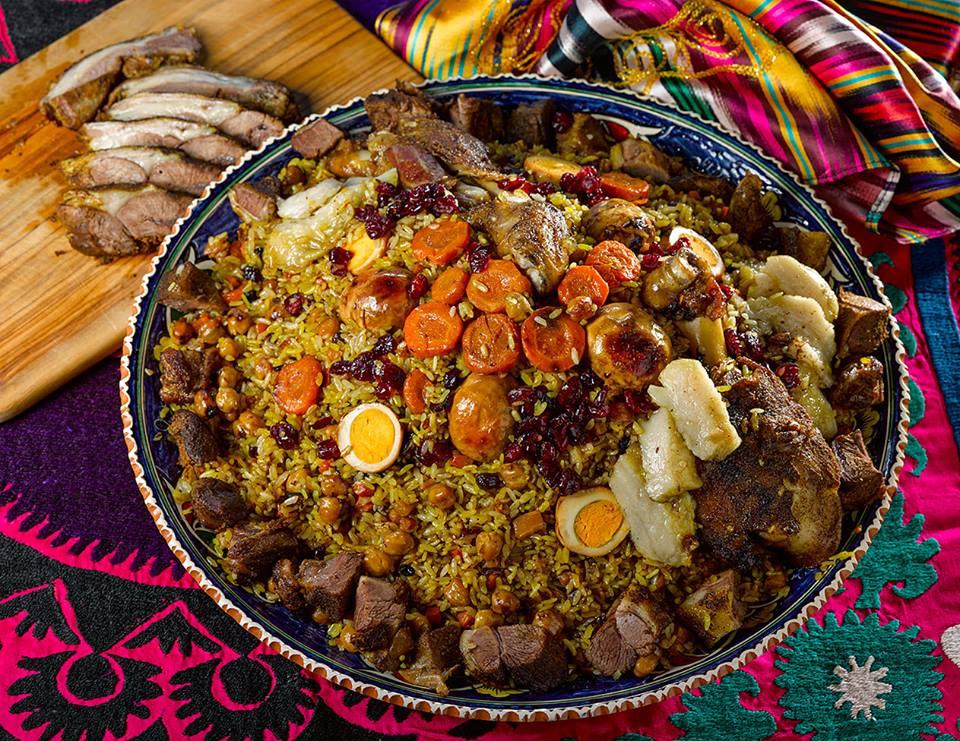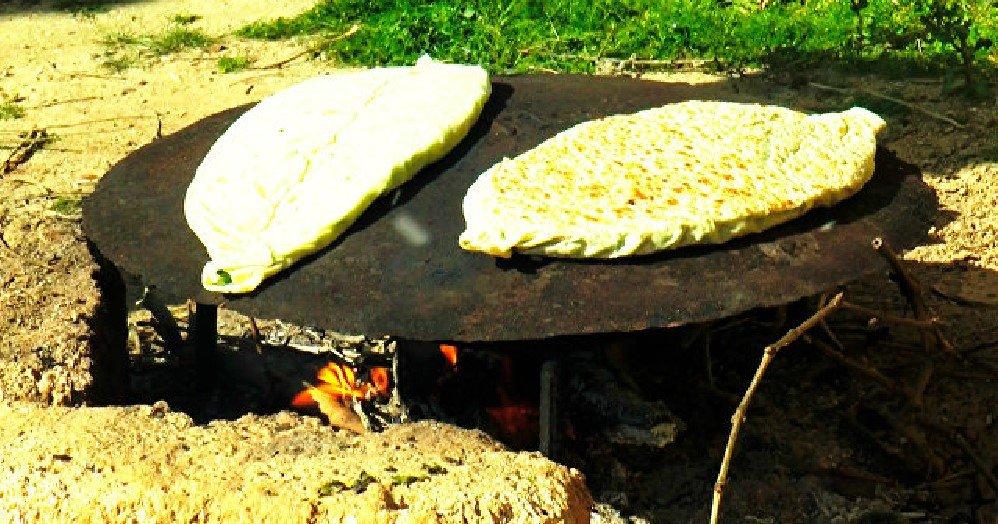Karabakh cuisine: Pearl of Azerbaijani culinary culture [PHOTO]
![Karabakh cuisine: Pearl of Azerbaijani culinary culture [PHOTO]](https://www.azernews.az/media/2017/11/24/qarabagh_mtb4.jpg)
By Aygul Salmanova
Acquaintance with people of a specific region of a country will not be complete, if you do not taste the dishes of it. The best way of doing this, of course, is to visit that specific region, go to a restaurant specializing in these dishes or pay a visit to a local family.
But what if the path of your “culinary journey” is covered by obstacles? This post containing interesting and informative information on peculiarities of the culinary culture of Karabakh, invaluable part of Azerbaijan, is just for such cases.
Karabakh cuisine, serving as a bridge between the cuisines of historical northern and southern Azerbaijan is an integral part of traditional Azerbaijani national culinary culture.
It is the symbiosis of traditions of different regions of Azerbaijan, which has appropriated a lot from their different cuisines and at the same time, however, preserved its own peculiarities.
While it serves as a cuisine identical with culinary cultures of the other regions of the country, some conditions such as traditional, climatic and geographical differences make it in its own way eclectic.
Nearly all types of traditional Azerbaijani open and closed hearths are used in Karabakh cuisine: tandir (oven made of clay in a hole in the earth), chala (pit), ojag (bonfire), saj (iron disk for baking bread), chargrill, bukhari (fire-place) and kura (furnace), which help to highlight certain nuances in local cuisine taking into consideration certain features.
Meat dishes
Good news for meat lovers! Used more than any ingredient, meat (preferably lamb) is indistinguishable part of the cuisine of this zone.
Local sheep, called kasma goyun (slaughtered sheep) or etlik (meat) are valued higher than other breeds.
The lamb of the Karabakh breed is used to cook the best kebabs. Making a good kebab is a science, and kebab is a separate culinary specialty. Not only what sheep it is cooked from, but also what side of the sheep the meat is taken from, as well as the sex, age, feeding conditions, what firewood or charcoal are used and how the animal was killed matter while making kabab.
Lamb and beef are used to make govurma (roast meat), sajustu doshama, jizbiz (roasted offals), gavli, dolma, yakhni, bagirbeyin, bozbash (dish made of chopped meat, pea and potatoes), khash (a dish cooked from the hooves of the cattle), kalla-pacha (soup prepared from ram's, lamb's or sheep's head and feet) and various soups.
Yakhni and govurma are the meals mentioned in the ancient Turkic monument of Kitabi Dada Gorgud. Khash is mentioned in written sources of the 11th-12th centuries. The meals made of meat serve as a garnish (gara) to different forms for pilaf and chilov.
In Lachin, one large dolma (meal in cabbage leaves), weighing about 200-350 grams, is served at weddings and funerals. This custom is also widespread in Gabala and Ismayilli regions of Azerbaijan.
Vegeterian meals
Being a vegetarian, however, does not deprive anybody from having a privilege of trying delicious meals of Karabakh cuisine!
A lot of vegetarian dishes: sikhma, suyug, kata with herbs, etc. can be found in Karabakh cuisine. Meals made of flour such as khashil, khorra, sum-suma; from grain - various kinds of hadik, govurga, govut, nukurd, gatmali, ayranli, yalanchi dolma, siyig, sudlu siyig, yarma khashil, pilafs, chilovs and many more among the vegetarian meals of this zone.
Various kinds of tar halvah and umaj halvah, shirin kata, koka, baklava, shakarbura, guymag and govud are prepared as a dessert for holidays and rituals.
As for drinks, a variety of sorbets, khoshabs and drinks prepared on the basis of bakmaz (boiled juice of mulberries, grapes) are served.
Greens, nuts and dried fruits
The population of Karabakh ate various wild grasses and cultivated greens. The outstanding Azerbaijani poet, thinker and statesman, Molla Panah Vagif, writes in his poems:
“Guard your vegetables and fields of greens - coriander, dill and fresh watercress very well, and take care of them!”
Some 245 wild plants which were used only in the cuisine of Lachin region were named in the book of the Doctor of History Professor Ziyadkhan Nabibayli.
Dried fruits were also widely used in the Karabakh cuisine, and they were served as a dessert. Dried fruits were used to make khoshab (compote) and were added to pilaf, soups, meat and other dishes.
Evliya Chelebi, the 17th century traveler, writes in his recordings: “Karabaglar… a gardener named Yazdon–gulu brought us 26 varieties of juicy pears. Trying the 'malanja', 'abbasi' and 'ordubadi' pears, you feel the taste of a candy in your mouth. There are pomegranates like a ruby.”
Flour products
Various types of bread, one of the main components of the meal of every Azerbaijani, were baked in Karabakh - kullama, bozlamaj, tandir, churak, kozlama, komba (ash-cake), lavash, khamrali, yukha, fatir, galincha, maldili, chapartma, jad and ajitma.
The favorite kind of bread, yukha, which was thin as paper was widely used both in winter and summer. It could be stored for years. People took a saj with themselves while traveling in order to bake yukha. Baked yukha was dried and stacked in a pile. Prior to use, water was sprinkled on it to make it ‘fresh’.
Traditional sandwiches ‘durmak’ or ‘burmak’ are also made from yukha. For this, yukha is stuffed with cheese, cottage cheese, herbs or butter, jam or meat, rolled up as a tube, folding the bottom so that the stuffing does not fall or spill out.
If the dough is kneaded with milk adding honey or sugar, ‘khirt-khirt yukha’ (crispy yukha) is made, mainly popular during holidays and sometimes without the sweet filling.
‘Lavash’ was made on a saj and tandir. The lavash was mostly cooked in Gubadli, Jabrayil, Zangilan and Fizuli regions of Karabakh. "Komba" of puff pastry was made in a tandir and under a saj, or on ashes.
Flour products such as "sudlu churak" (milk bread), "fasali", "bishi", "yagli koka", "eyirdek", "keppeche" and "sakkizlik" are common for the Karabakh cuisine. Among these, however, kata (flat pie with greens) takes special place.
Prepared on a saj, kata is made by spreading chopped greens and various fillings (with cheese, cottage cheese, potatoes, etc.) on half of a thinly rolled yukha and with the other half covering the staffing. The edges of the dough are stuck and baked on both sides on a saj. A piece of butter is placed inside when served, and gatig (yogurt) is served alongside.
Dairy products
Dairy cuisine in the Karabakh zone is familiar to the other regions of Azerbaijan. Cow, sheep and goat milk is used, while buffalo and goat milk is carry medicinal character.
Initial milk received after the birth of a calf, is called "agiz", which, if cooked, is a tasty dish called katamaz. As a ritual, this meal is divided between neighbors (usually seven families).
Sometimes artificial katamaz is prepared, for which one egg yolk is added to 1 liter of milk and cooked. If you put a raw beaten egg wholly and carefully, so that it does not curdle, and boil it, adding honey, you will get a drink called "bulama".
Milk was also used as a standalone drink, especially with fresh bread, as the basis for cold (dogramaj - "okroshka" (cold soup with chopped vegetables and meat)) and hot soups, and for making pastry and bakery products.
Sheep milk was mainly used for making rennet cheese and had very high value. Abomasum of newborn lambs or grass "dalama otu" (rennet grass) were used for fermentation. Goat cheese, however, was considered the most expensive, as well as medicinal cheese.
The liquid preserved after cottage cheese is called zardab (whey) and after cheese – dalama (fresh cheese), both of which are used for making drinks and for baking bread. This bread lasts longer and tastes better than the one made in water. If dalama is boiled, it becomes "nor".
Families and shepherds of Karabakh, who climb mountains with flocks in summer, mix a black sheep's fresh milk with mountain snow and call this dish "gar karamazi" (snow karamaz). Sometimes dishes with gar karamazi are buried in the snow or put on ice. The main difference from ice cream is that sugar is not added to the mixture. Interestingly, the "gar karamaz" is prepared only from the milk of a black sheep.
Fish Dishes
Owing to the fact that Karabakh is not close to the sea, sea fish is not used in the cuisine of the region.
Fish dishes are mainly made of freshwater fish, mostly in boiled and fried forms. Fish dishes do not constitute the primary part of the Karabakh cuisine as local people consider them as “self-indulgence”.
A very small number of composite fish dishes exist in the parts close to lakes and rivers such as dishes from freshwater fish, "lavangi", "gurgut" and "fish buglama" (stewed fish).
What makes the lavangi (stuffed fish) of this region distinctive from the rest of the regions is lentil and rice added to the stuffing. Additionally tomatoes, peppers, celery, green onions and sour cherry plum lavashana are also added to lavangi. Another peculiarity of Karabakh lavangi is its preparation method: the fish is steamed.
In order to prepare gurgut, a mixture of minced akhta zogal (dried pitted Cornelian cherry), and fine-cut onions, lavashana, hot and sweet peppers is used as a stuffing for the fish. A little water and butter is added to the salted fish, and then it is cooked on low heat for 30-40 minutes.
The fish buglama (stewed fish) is cooked in different ways: the fish is stewed with different fruits and vegetables.
---
Follow us on Twitter @AzerNewsAz
Here we are to serve you with news right now. It does not cost much, but worth your attention.
Choose to support open, independent, quality journalism and subscribe on a monthly basis.
By subscribing to our online newspaper, you can have full digital access to all news, analysis, and much more.
You can also follow AzerNEWS on Twitter @AzerNewsAz or Facebook @AzerNewsNewspaper
Thank you!




